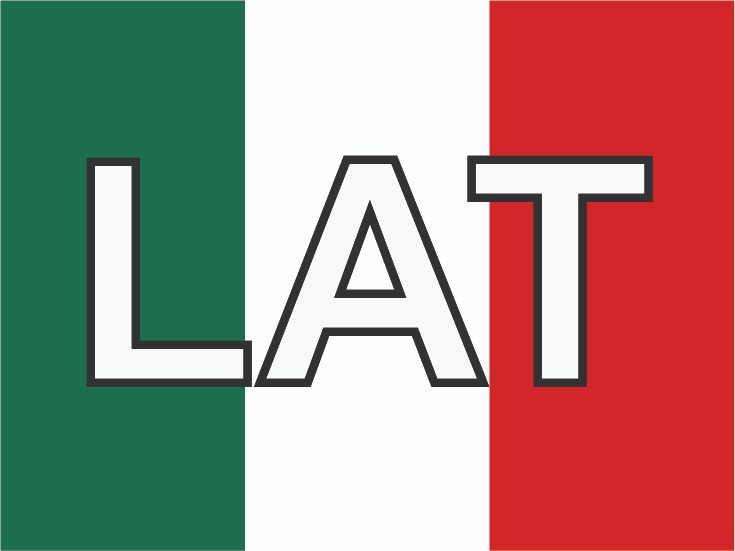Non-suicidal self-injury in patients with eating disorders: nuclear aspects
Abstract
Background: Through the culture of thinness, increasingly promoted in our society as a beauty canon, it is not surprising that the number of people affected by eating disorders is increasing.
Objective: This research aims to study the relationship between non-suicidal self-injuries and nuclear aspects of eating disorders specified along with this article.
Methods: The sample consisted of 60 women diagnosed with anorexia and bulimia. Questionnaires assessing impulsivity, body satisfaction, alexithymia, body attitude and self-esteem were administered. Participants with non-suicidal self-harm were compared with those without, and participants with anorexia with and without self-harm and participants with bulimia with and without self-harm were compared.
Results: Differences were found in body dissatisfaction = 5,71; p ≤ ,01), body attitudes = 4,80; p ≤ ,02), self-esteem = 14,09; p ≤ .00) and impulsivity (t = 3,39; p ≤ ,01) between participants with and without non-suicidal self-harm.
Conclusions: These are key factors for the clinic in the treatment of eating disorders to prevent the presence of self-harm, as it allows focusing the treatment target on those aspects such as dissatisfaction and impulsivity, which are key in the development of self-harm.
Authors
Downloads
Keywords
- Eating disorder
- body dissatisfaction
- non-suicidal self-injury
- self-esteem
- impulsivity
- alexithymia
- Bulimia Nervosa
- Anorexia Nervosa
- Bulimia
- Anorexia
- Perfectionism
- Thinness
- Personal Satisfaction
- Weight Loss
- Self-Injurious Behavior
- Feeding and Eating Disorders
- Impulsive Behavior
- Obsessive Behavior
- Feeding Behavior
References
American Psychiatric Association. Manual diagnóstico y estadístico de los trastornos mentales (5.th ed. [DSM 5]), Buenos Aires, Argentina: Editorial Médica Panamericana; 2014.
Behar R. Trastornos de la conducta alimentaria: clínica y epidemiología. En: R. Behar R, Figueroa G, ed. Trastornos de la conducta alimentaria, Santiago de Chile: Editorial Mediterráneo; 2004.
Arcelus J, Mitchell AJ, Wales J, Nielsen S. Mortality rates in patients with anorexia nervosa and other eating disorders: A meta-analysis of 36 studies. Arch Gen Psychiatry. 2011;68:724-31. https://doi.org/10.1001/archgenpsychiatry.2011.74
Fedorowicz VJ, Falissard B, Foulon C, Dardennes R, Divac SM, Guelfi JD, et al. Factors associated with suicidal behaviors in a large French sample of inpatients with eating disorders. Int J Eat Disord. 2007;14:309-13. https://doi.org/10.1002/eat.20415
Nicholls DE, Lynn R, Viner RM. Childhood eating disorders: British national surveillance study. Br J Psychiatry. 2011;198:295-301. https://doi.org/10.1192/bjp.bp.110.081356
de Portela Santana ML, da Costa Ribeiro H, Mora Giral M, Raich RM. La epidemiología y los factores de riesgo de los trastornos alimentarios en la adolescencia; una revisión. Nutr Hosp. 2012;27:391-401. https://doi.org/10.3305/nh.2012.27.2.5573
Centers for Disease Control and Prevention. 10 leading causes of death by age group, United States: CDCP. 2015 [consultada el 2 septiembre de 2019]. Disponible en: https://www.cdc.gov/injury/wisqars/pdf/leading_causes_of_death_by_age_group_2015-a.pdf.
Keshaviah A, Edkins K, Hastings ER, Krishna M, Franko DL, Herzog DB, et al. Re-examining premature mortality in anorexia nervosa: A meta-analysis redux. Comprehensive Psychiatry. 2014;55:1773-84. https://doi.org/10.1016/j.comppsych.2014.07.017
Ribeiro JD, Franklin JC, Fox KR, Bentley KH, Kleiman EM, Chang BP, et al. Self-injurious thoughts and behaviors as risk factors for future suicide ideation, attempts, and death: a meta-analysis of longitudinal studies. Psychol Med. 2016;46:225-36. https://doi.org/10.1017/S0033291715001804
Franklin JC, Ribeiro JD, Fox KR, Bentley KH, Kleiman EM, Huang X, et al. Risk factors for suicidal thoughts and behaviors: A meta-analysis of 50 years of research. Psychol Bull. 2017;143:187-32. https://doi.org/10.1037/bul0000084
Klonsky ED, Muehlenkamp JJ, Lewis SP, Walsh B. Nonsuicidal Self-Injury. Ashland, EE.UU: Hogrefe; 2011. https://doi.org/10.1002/9780470479216.corpsy0609
Muehlenkamp JJ, Gutierrez PM. An Investigation of Differences Between Self-Injurious Behavior and Suicide Attempts in a Sample of Adolescents. Suicide Life-Threatening Behav. 2004;34:12-23. https://doi.org/10.1521/suli.34.1.12.27769
Claes L, Fernández-Aranda F, Jimenez-Murcia S, Botella C, Casanueva FF, de la Torre R, et al. Co-occurrence of non-suicidal self-injury and impulsivity in extreme weight conditions. Pers Individ Dif. 2013;54:137-40. https://doi.org/10.1016/j.paid.2012.07.035
Claes L, Norré J, Van Assche L, Bijttebier P. Non-suicidal self-injury (functions) in eating disorders: Associations with reactive and regulative temperament. Pers Individ Dif. 2014;57:65-9. https://doi.org/10.1016/j.paid.2013.09.022
Taliaferro LA, Muehlenkamp JJ. Risk factors associated with self-injurious behavior among a national sample of undergraduate college students. J Am Coll Heal. 2015;63:40-8. https://doi.org/10.1080/07448481.2014.953166
Favaro A, Ferrara S, Santonastaso P. Self-injurious behavior in a community sample of young women: relationship with childhood abuse and other types of self-damaging behaviors. J Clin Psychiatry. 2007;68:121-31. https://doi.org/10.4088/JCP.v68n0117
Claes L, Vandereycken W, Vertommen H. Self-injurious behaviors in eating-disordered patients. Eat Behav. 2001;2:263-72. https://doi.org/10.1016/S1471-0153(01)00033-2
Claes L, Islam MA, Fagundo AB, Jimenez-Murcia S, Granero R, Agüera Z, et al. The relationship between non-suicidal self-injury and the UPPS-P impulsivity facets in eating disorders and healthy controls. PLoS One. 2015;10: e0126083. https://doi.org/10.1371/journal.pone.0126083
Anderson CB, Carter FA, McIntosh V V., Joyce PR, Bulik CM. Self-harm and suicide attempts in individuals with bulimia nervosa. Eat Disord. 2002;10:227-43. https://doi.org/10.1002/erv.472
Svirko E, Hawton K. Self-Injurious Behavior and Eating Disorders: The Extent and Nature of the Association. Suicide Life-Threatening Behav. 2007;37:409-21. https://doi.org/10.1521/suli.2007.37.4.409
Walsh B. Clinical assessment of self-injury: A practical guide. Journal of Clinical Psychology. 2007;63:1057-68. https://doi.org/10.1002/jclp.20413
Mas MB, Navarro MLA, Jiménez AML, Pérez IT, Sánchez CDR, San Gregorio MÁP. Personality traits and eating disorders: Mediating effects of self-esteem and perfectionism. Int J Clin Heal Psychol. 2011;11:205-27.
Peck LD, Lightsey OR. The eating disorders continuum, self-esteem, and perfectionism. J Couns Dev. 2008;86:184-192. https://doi.org/10.1002/j.1556-6678.2008.tb00496.x
Cooper PJ, Taylor MJ, Cooper Z, Fairbum CG. The development and validation of the body shape questionnaire. Int J Eat Disord. 1987;6:485-94. https://doi.org/10.1002/1098-108X(198707)6:4<485::AID-EAT2260060405>3.0.CO;2-O
Raich RM, Mora M, Soler A, Avila C, Clos I, Zapater L, et al. Adaptación de un instrumento de evaluación de la insatisfacción corporal. Clin y Salud. 1996;7:51-66.
Probst M, Vandereycken W, Coppenolle H Van, Vanderlinden J. The body attitude test for patients with an eating disorder: Psychometric characteristics of a new questionnaire. Eat Disord. 1995;3:133-44. https://doi.org/10.1080/10640269508249156
Gila A, Castro J, Gómez MJ, Toro J, Salamero M. The body attitude test: Validation of the Spanish version. Eat Weight Disord. 1999;4:175-78. https://doi.org/10.1007/BF03339733
Rosenberg M. Society and the Adolescent Self-Image, Princeton, New Jersey: Princeton University Press:1965. https://doi.org/10.1515/9781400876136
Vázquez Morejón A, Jiménez García-Bóveda R, Vázquez-Morejón Jiménez R. Escala de autoestima de Rosenberg: Fiabilidad y validez en población clínica española. Apunt Psicol. 2004;22:247-55.
Barratt, ES. Anxiety and impulsiveness related to psychomotor efficiency. Percept Mot Skills. 1959;9:191-8. https://doi.org/10.2466/PMS.9.3.191-198
Oquendo MA, Baca-Garcia E, Graver R, Morales M, Montalvan V, Mann JJ. Spanish adaptation of the Barratt Impulsiveness Scale (BIS-11). Eur J Psychiatry. 2001;15:147-55. doi: 0.1016/j.ijchp.2015.07.002
Bagby RM, Taylor GJ, Parker JDA. The twenty-item Toronto Alexithymia scale-II. Convergent, discriminant, and concurrent validity. J Psychosom Res. 1994;38:33-40. https://doi.org/10.1016/0022-3999(94)90006-X
Martínez Sanchez F. Adaptación española de la escala de Alexitimia de Toronto (TAS-20). Clínica y salud. 1996;7:19-32.
Smithuis L, Kool-Goudzwaard N, de Man-van Ginkel JM, van Os-Medendorp H, Berends T, Dingemans A, et al. Self-injurious behaviour in patients with anorexia nervosa: A quantitative study. J Eat Disord. 2018;6:26. https://doi.org/10.1186/s40337-018-0214-2
Bydlowski S, Corcos M, Jeammet P, Paterniti S, Berthoz S, Laurier C, et al. Emotion-processing deficits in eating disorders. Int J Eat Disord. 2005;37:321-9. https://doi.org/10.1002/eat.20132
Hayaki J, Friedman MA, Brownell KD. Emotional expression and body dissatisfaction. Int J Eat Disord. 2002;31:57-62. https://doi.org/10.1002/eat.1111
Greene D, Hasking P, Boyes M. The associations between alexithymia, non‐suicidal self‐injury, and risky drinking: The moderating roles of experiential avoidance and biological sex. Stress Heal. 2019;260:140-66. https://doi.org/10.1002/smi.2879
Vega D, Vilà-Balló A, Soto À, Amengual J, Ribas J, Torrubia R, et al. Preserved Error-Monitoring in Borderline Personality Disorder Patients with and without Non-Suicidal Self-Injury Behaviors. PLoS One. 2015;10:1-16. https://doi.org/10.1371/journal.pone.0143994
Muehlenkamp JJ, Claes L, Smits D, Peat CM, Vandereycken W. Non-suicidal self-injury in eating disordered patients: A test of a conceptual model. Psychiatry Res. 2011;188:102-8. https://doi.org/10.1016/j.psychres.2010.12.023

Copyright (c) 2021 Universidad del Valle

This work is licensed under a Creative Commons Attribution-NonCommercial 4.0 International License.
The copy rights of the articles published in Colombia Médica belong to the Universidad del Valle. The contents of the articles that appear in the Journal are exclusively the responsibility of the authors and do not necessarily reflect the opinions of the Editorial Committee of the Journal. It is allowed to reproduce the material published in Colombia Médica without prior authorization for non-commercial use

 https://orcid.org/0000-0002-4145-0433
https://orcid.org/0000-0002-4145-0433


















